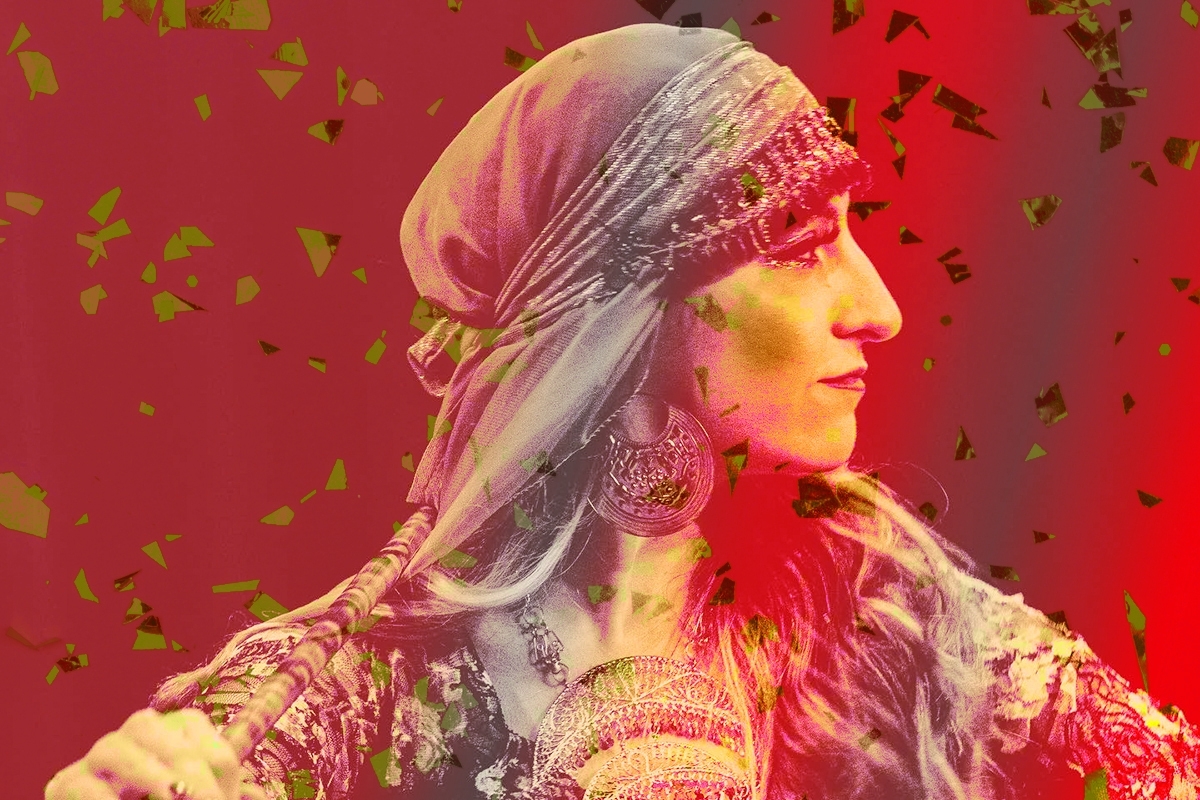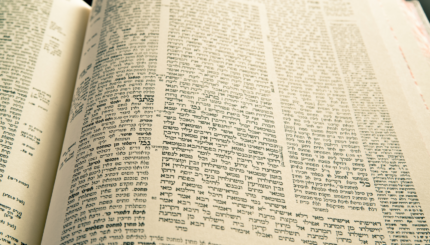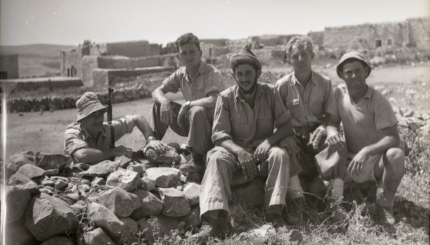In the 1970s, the relationship between Ashkenazi and Mizrahi feminists in Israel followed liberal-radical values, believing in sisterhood and solidarity as well as freedom and equality of all women. But racist and patronizing attitudes common in the larger society were also present in feminist movements, and it took Mizrahi activists more than twenty years to make their voices heard.
Mizrahi feminism goes beyond the western scope of feminism to include the history and issues that concern women in the Middle East (Jewish and non-Jewish) in Israel and in Arab and Muslim countries. In this respect, it is particularly sensitive to issues of racism, class division, immigration and ethnic discrimination; it is often described as an intersectional feminism that focuses mainly on the struggle against gender and ethnic oppression.
The Origins of Mizrahi Feminism
“Mizrahi feminism” is an expanding term used in feminist discourse and activist feminism in Israel. It stretches the boundaries of Israeli feminism—a feminism that evolved out of the western liberal tradition. Mizrahi feminism goes beyond the western scope of feminist activism and research to include the history and issues that concern women in the Middle East (Jewish and non-Jewish) in Israel and in Arab and Muslim countries. In this respect, it is particularly sensitive to issues of racism, class division, immigration and ethnic discrimination; it is often described as an intersectional feminism that focuses mainly on the struggle against gender and ethnic oppression.
A main criticism of classical liberal feminism is that it focuses on the liberation and equality of women in their abstract forms and strives for women’s equal access to the public sphere, leaving out topics that concern specific groups of women.

Help us keep Jewish knowledge accessible to millions of people around the world.
Your donation to My Jewish Learning fuels endless journeys of Jewish discovery. With your help, My Jewish Learning can continue to provide nonstop opportunities for learning, connection and growth.
Israeli feminism in its first steps was unclear about its agenda. On the one hand, it was an imitation of US feminism because it was established by US immigrant women in the 1970s; on the other hand, this model was not fully applicable to the Israeli social and political structure or responsive to Israeli women’s needs. Hence in the early days it was impossible to determine what was liberal and what was radical. Israel’s complex social structure and its preoccupation with security and religious politics shaped the trajectory of Israeli feminism beginning in the 1970s.
Mizrahi feminism split off from “Israeli feminism,” considering Israeli feminism to be in essence “Ashkenazi feminism” because most of its activists were white Jewish women of European origin. Mizrahim, who originate in North Africa and the Middle East, were seen by Zionists after their migration to Israel as an aggregated group of “Bnei Edot Hamizrah” (children of Mizrahi ethnic groups). Their specific histories, languages, and cultures vanished from Israeli history and curricula, and they were treated as one ethnic group in the eyes of the Zionist absorbing authorities, who aimed to melt all Jews in one Jewish national pot. Only in Israel is one “a Mizrahi,” rather than Yemenite, Moroccan, Iraqi, etc.
Tensions Between Ashkenazi and Mizrahi Activists
In the 1970s, Jewish feminists migrated from the United States, bringing with them ideas from the American women’s liberation movement. Together with Israeli Ashkenazi women, they formed a feminist movement in the liberal-radical spirit and began to promote their agenda, joined by a few Mizrahi feminists attracted by their slogans of liberation, sisterhood, and solidarity.
From the beginning the Mizrahi feminists experienced patronization, exclusion, and discrimination, as Hanita Raz, one of the activists, reported. They learned that problems they recognized as Mizrahim outside the movement infected feminist activity as well. As Ramazanoglu put it, feminists’ class interests generally outweigh sisterhood and solidarity; in a choice between a low-priced dress produced by an exploited woman and a more expensive, ethnically produced item, they purchase the less expensive dress. Ashkenazi feminists favored their middle- and upper-class interests, rather than their lower-class sisters—most of whom were of Mizrahi or Palestinian origin. Within feminist organizations, stereotypes and prejudice about Mizrahim were common.
It took Mizrahi feminists more than 25 years to find their voices and begin expressing their opinions about the aggravating situation. In that time feminists met once a year in a gathering they called “the feminist movement.” But it was not yet a movement or a well-organized feminist body. The organizations were still in formation, by women from upper-middle-class strata who considered themselves feminists. In 1994, in the communist kibbutz Givat Haviva where the annual conferences usually took place, a handful of Mizrahi feminists burst onto the stage where the main speech was being given on a Friday night, demanding that oppression and racism against Mizrahi and Palestinian lower-class participants be dealt with immediately.
About a dozen of leading Mizrahi figures including Netta Amar, Henriette Dahan-Kalev, and Tikva Levi, refused to leave the stage and the program stopped. The Ashkenazi feminists, deeply hurt, accused the Mizrahi women of ingratitude. The long-silenced tension surfaced, and bitterness on both sides soured the atmosphere. Many of the more radical Mizrahi feminists left the movement, while others, including the prominent figure Vicki Shiran, favored compromise and remained. Most of those in favor of compromise were better off and better educated and lived in Tel Aviv, while the more militant came from more peripheral areas.
The Cultural and Traditional Divide
The cleavage between Mizrahi and Ashkenazi women is felt in other domains too, particularly their different histories, cultures, and religious practices. Mizrahi women were generally educated in homes with traditional Mizrahi lifestyles, often referred to in English as Sephardi. Jewish communities in Arab and Muslim countries had often found ways to intertwine religion, tradition, and modernity; even in the face of modernization, these communities maintained traditional Jewish values of family, respect for parents and ancestors, and memory of deceased rabbis.
In reaction, Mizrahi feminists invested in redeeming their mothers’ legacies; they worked to reclaim precious cultural assets, rather than seeing them as vulgar, populist, and superficial, as the absorbing authorities did. Mizrahi feminists joined with male Mizrahi activists to replace contempt, humiliation, and pain with pride in their ancestors’ legacies and to re-awakening their culture through musical, poetic, and culinary projects drawing on traditions from Arab countries. They also sought to restore women’s traditional knowledge in all domains of life, not just child rearing and household tasks. In recent years, the number of conferences, published writings, films, and television and plastic arts events has increased, as second- and third-generation Mizrahi artists, who were born in Israel or came as children, look back to their cultural heritages.
By the end of the twentieth century, artistic and cultural products proliferated, exhibited in substantial halls and galleries and visible to general audiences in Israel and abroad. Mizrahi artists, film producers, and academics fought for inclusion in official committees that allocate money for cultural and knowledge production, in order to direct funding towards projects of Mizrahi origin. At the same time, they point out the Ashkenazi-dominated systems that preserve economic and cultural structures that discriminate against Mizrahim.
State, Religion and Mizrahi Feminism
An issue that is unique to Israel is that of the relationship between the state and religion. Here, too, feminism has registered some success, mainly with respect to laws of marriage and divorce in the rabbinical courts, the Conservative and Reform movements, and legislation in favor of LGBTQ interests. The Reform and Conservative movements demand mixed-gender prayers in synagogues, women’s right to be ordained as rabbis, women’s right to serve as religious authorities in religious committees at the municipal level and the right to pray at the Western Wall. However, this agenda is mainly that of a minority of feminists, mostly upper-class, well-educated, Ashkenazi women.
As the majority of observant Mizrahi women belong to traditional and/or Orthodox sectors of the religious population, they are more concerned with problems such as protecting women against domestic violence, child care, and issues of poverty and welfare.The Ultra-Orthodox and traditional Mizrahi population in Israel is on average much poorer than the secular population, and its gender division of labor is completely different. While men are expected to learn Torah in the yeshiva, women are in charge of child rearing and religious education, breadwinning and supporting families.
Many of the Mizrahi women belong to the traditional Sephardic Shas movement, whose motto is “Returning the glorious Sephardic crown” Shas aims to redeem the humiliated honor of the Mizrahi community and regain its traditional glory. When traditional Mizrahi families sent their children to Ashkenazi Ultra-Orthodox educational institutions, they realized that the moderate and tolerant religious practices of Mizrahi homes contrasted sharply with the rigid practices the children were taught in schools and yeshivas, leading to the loss of Mizrahi values.
In the 1990s a Mizrahi Orthodox feminist branch developed within Shas, led by Adina Bar Shalom, the daughter of the movement’s late spiritual leader Rabbi Ovadiah Yosef. Bar Shalom identified the severe anxiety suffered by Shas’ poor Mizrahi families. She received her father’s blessing to establish a college for women that would prepare them for professions in which they could better support their families, especially jobs that could be performed from home by women with large families, such as computers, travel agencies and bookkeeping. A few years later the college opened its gates to men who had dropped out of yeshivas. The project empowered women, many of whom went on to universities and more prestigious jobs as managers, journalists, lawyers, and educators. Bar Shalom won the Israel Prize, Israel’s highest honor, for this work.
Unfortunately the college closed after seventeen years for financial reasons. Rumors hint at political problems shortly after Rabbi Yosef’s death, when new rabbis objected to the freedom and power Bar Shalom and other women gained. This success is particularly significant because when women become conscious of their freedom and rights, no one can put them back where they were previously. After women tasted freedom, higher education, and careers, new community control regulations could limit their steps but not their awareness of their own abilities.
Reprinted from the Shalvi/Hyman Encyclopedia of Jewish Women with permission of the author and the Jewish Women’s Archive.




